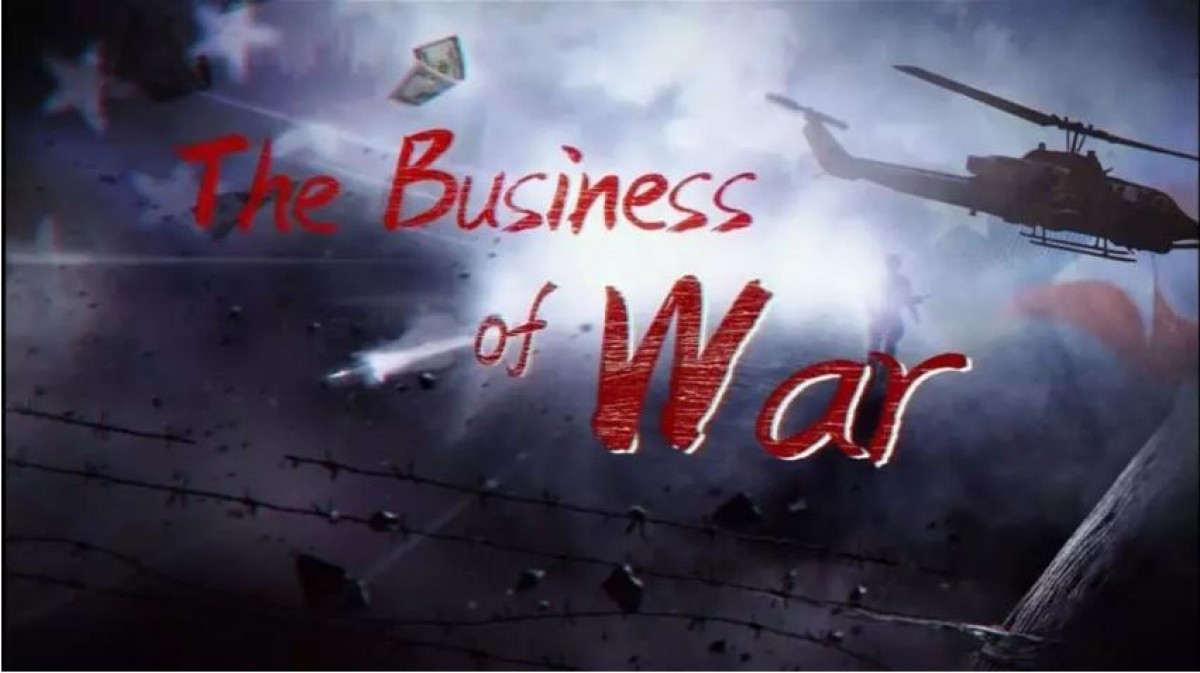 745
745
The Lucrative Business of War: How Arms Manufacturing Thrives Amid Rising Global Tensions
The Lucrative Business of War: How Arms Manufacturing Thrives Amid Rising Global Tensions
By: A. Mahdavi
As the world teeters on the brink of yet another World War, the focus on military expansion intensifies. Countries, eager to bolster their defense capabilities, are turning increasingly to arms manufacturers.
This trend has only grown since the onset of the war in Ukraine, compounded by the devastating conflict in Gaza and the looming possibility of a broader regional war in the Middle East. The demand for sophisticated weaponry has surged, spurring orders to arms companies and propelling their income and stock values upward—all while the global economy flounders.
The UHS : The Winner in the Arms Race
The staggering growth of the seven largest US arms manufacturers is an undeniable testament to the industry’s critical role in the American economy. Giants like Lockheed Martin, Honeywell International, and Northrop Grumman have seen their market value balloon by more than $500 billion in just the past two years. This extraordinary surge highlights a broader trend: war, far from being a destructive force for the American economy, has proven immensely profitable.
In fact, the US has leveraged the crisis in Ukraine to bolster its economy, positioning itself as both a dominant military power and a strategic defense partner for much of the world, particularly Europe. NATO’s stipulation that member states allocate approximately 2% of their gross domestic product (GDP) to defense spending further guarantees a steady flow of revenue to the American arms industry. These dynamics ensure that the US not only profits handsomely from the global arms trade but also solidifies its economic strength, even amid global instability.
America’s strategy has been strikingly effective. By remaining largely distant from direct conflict with Russia, the US has managed to reap the benefits of war while sidestepping many of its costs. As long as the arms industry continues to thrive, there is little incentive for the US to press for an end to the war in Ukraine. The profits, quite simply, outweigh the risks.
Europe’s Arms Industry: A Profitable Yet Subordinate Player
Europe’s arms manufacturers, while not matching the financial clout of their American counterparts, have also enjoyed significant gains. The stock market value of European arms companies has swelled to over $200 billion—approximately half of that of the US industry—reflecting their success in navigating the conflict. Nations such as France, the United Kingdom, Norway, and Italy have been particularly successful, securing substantial weapons orders that have injected much-needed revenue into their economies.
This financial windfall explains Europe’s eagerness to funnel various resources into supplying Ukraine with weapons. But in this bloody calculus, it is the Ukrainian people—and the civilians of war-ravaged regions of Russia—who bear the greatest cost. They are paying for the ambitions of arms manufacturers with their lives, while European governments position themselves to benefit economically from the carnage.
Germany and France, for example, have seized this opportunity to cement their positions as leading powers within Europe. By leveraging Russia’s frozen assets in Europe to fund arms purchases, they have found a way to recover parts of their financial losses without depleting their own coffers. The war has thus provided a convenient avenue for these countries to revive their economies, all while maintaining the veneer of benevolent aid to Ukraine.
Conclusion
For the wealthy nations that dominate arms production, this war is a financial bonanza. Advanced military technologies have allowed these countries to meet the needs of those embroiled in conflict, reaping substantial economic rewards in the process. At the same time, they publicly posture as altruistic benefactors offering aid to war-torn regions. This duality—profiteering from war while claiming humanitarian motives—allows arms manufacturers to prosper even as entire nations are engulfed in violence.
The profitability of war has become so deeply ingrained that it now serves as a vital driver of economic growth for some countries. For these nations, the continuation of war has become a financial necessity. Only when this necessity fades might we begin to entertain the possibility of peace. Until then, the global arms industry will continue to thrive, as a world on the verge of explosion remains a paradise for the giants of war.
 745
745
Comment
Post a comment for this article